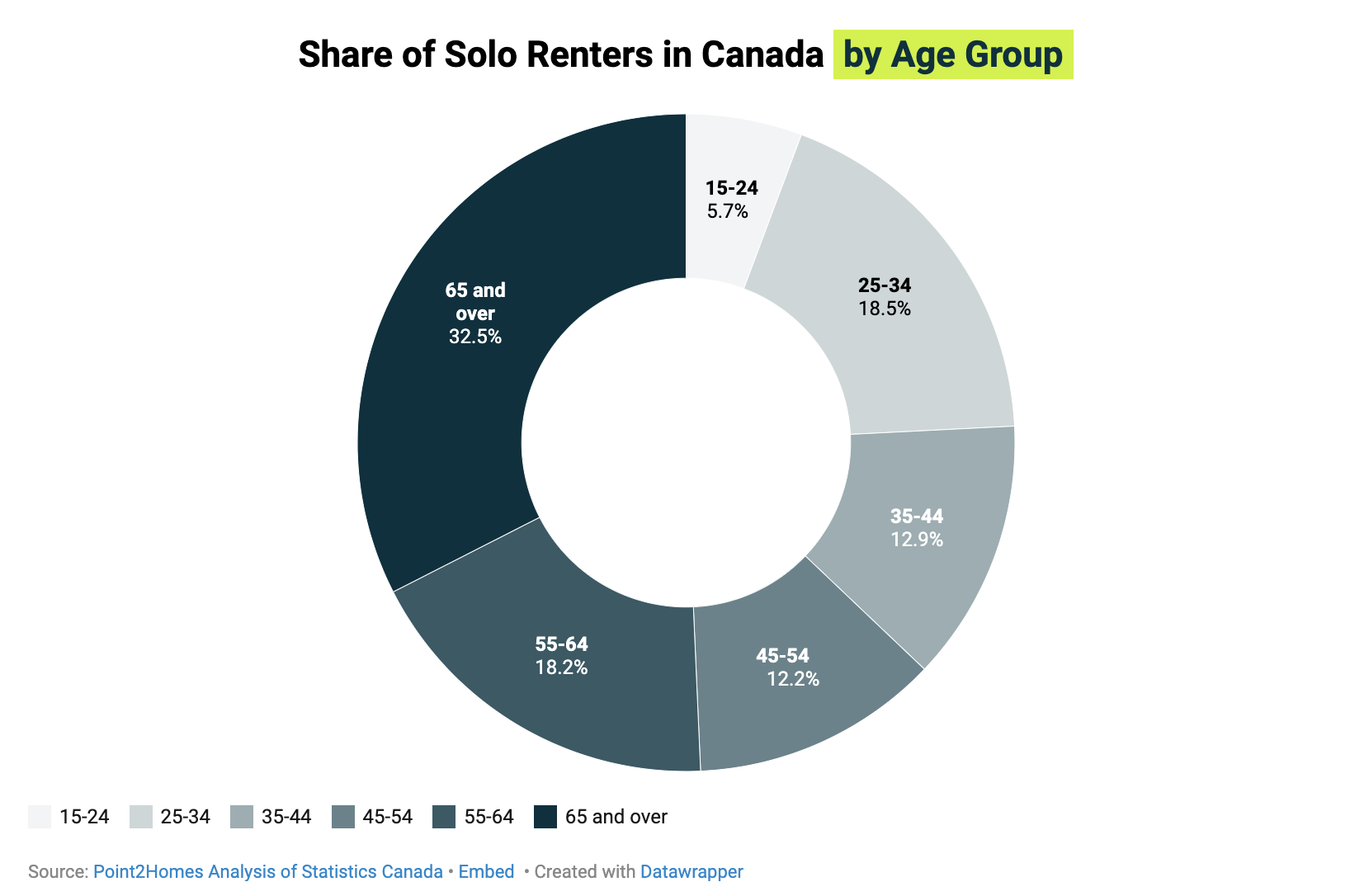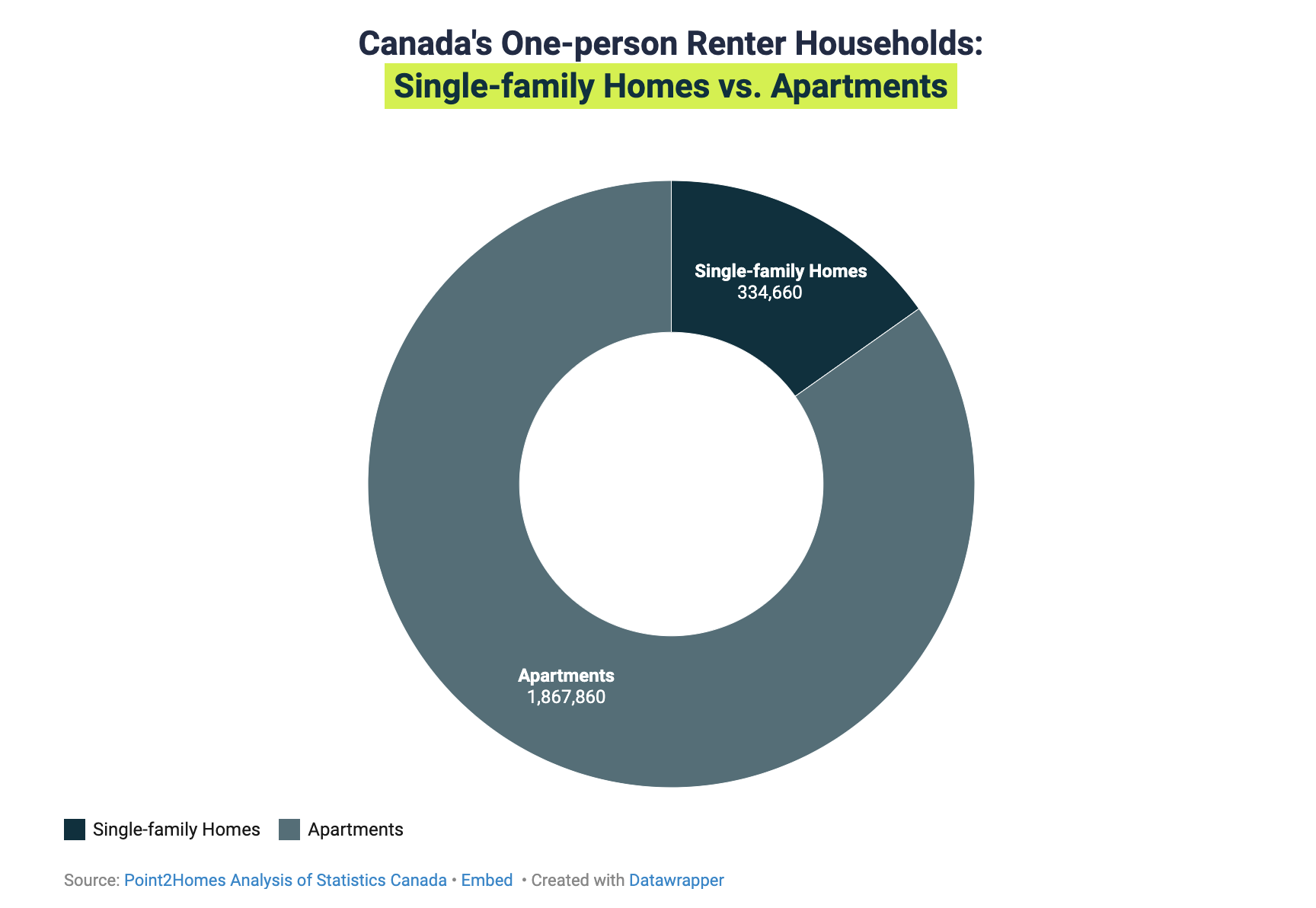Solo renting is becoming a defining trend in Canada’s housing market, with seniors aged 65 and older emerging as the largest demographic driving this shift, a Point2Homes study shows.
With 4.4 million Canadians living alone in 2021—over 2.6 million of which are in Ontario and Quebec—one-person households have doubled since 1991, and solo renters now comprise over 50 per cent of this group, surpassing solo homeowners.
This surge reflects broader societal changes. Rising housing costs have made homeownership unattainable for many, particularly in urban centers like Toronto, Vancouver and Montreal.
Renting offers a more accessible option, allowing individuals to maintain independence without the long-term financial burden of owning a property. Additionally, evolving societal priorities—such as a focus on personal freedom, delayed family formation and the increasing preference for hassle-free living—have contributed to this trend.
A third of Canada’s solo renters are seniors
Older renters are particularly drawn to downsizing, flexibility, reduced responsibilities and the adaptability of renting as they navigate life changes like widowhood or divorce. Seniors now make up one-third of Canada’s solo renters, with their share growing faster than any other age group between 2016 and 2021.
In cities like Ontario’s Halton Hills and Caledon, over half of solo renters are seniors, reflecting a broader shift in demographics. 
More younger renters in urban hubs
Meanwhile, younger solo renters gravitate toward urban hubs like Toronto and Montreal for education, career opportunities and cultural attractions.
Despite their numbers, younger generations are struggling to afford solo living, with high housing costs and postponed life milestones influencing their choices.

Single-family home rentals gaining popularity
Additionally, the type of housing solo renters prefer is evolving. While apartments remain popular, more renters are opting for single-family homes and two-bedroom units, signalling a desire for flexibility and extra space to accommodate varied lifestyle needs, whether for a home office, a guest room or more comfortable living conditions.
Single house renters surpassed 25 per cent of renters in 16 Canadian cities.

With the rise of senior solo renters, there’s a growing focus on creating housing that prioritizes accessibility, comfort and community integration. By addressing social isolation, financial challenges and the need for adaptable spaces, Canada’s housing market can better serve its aging population and redefine independent living for future generations.
Review the full report here.













